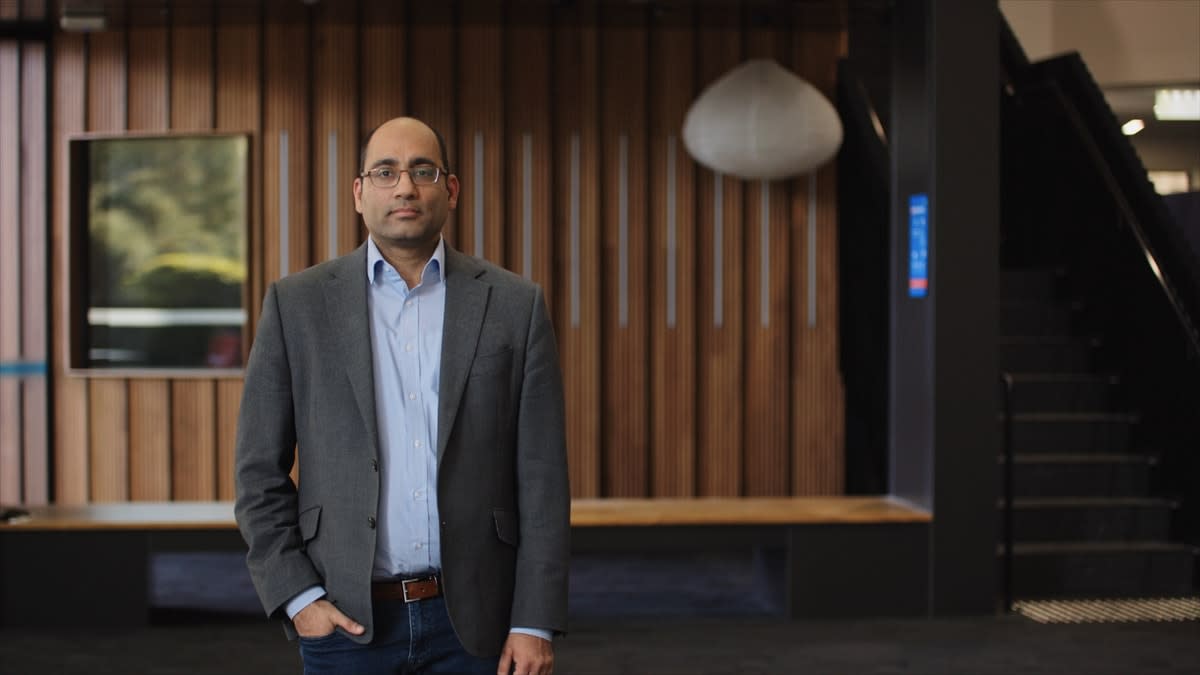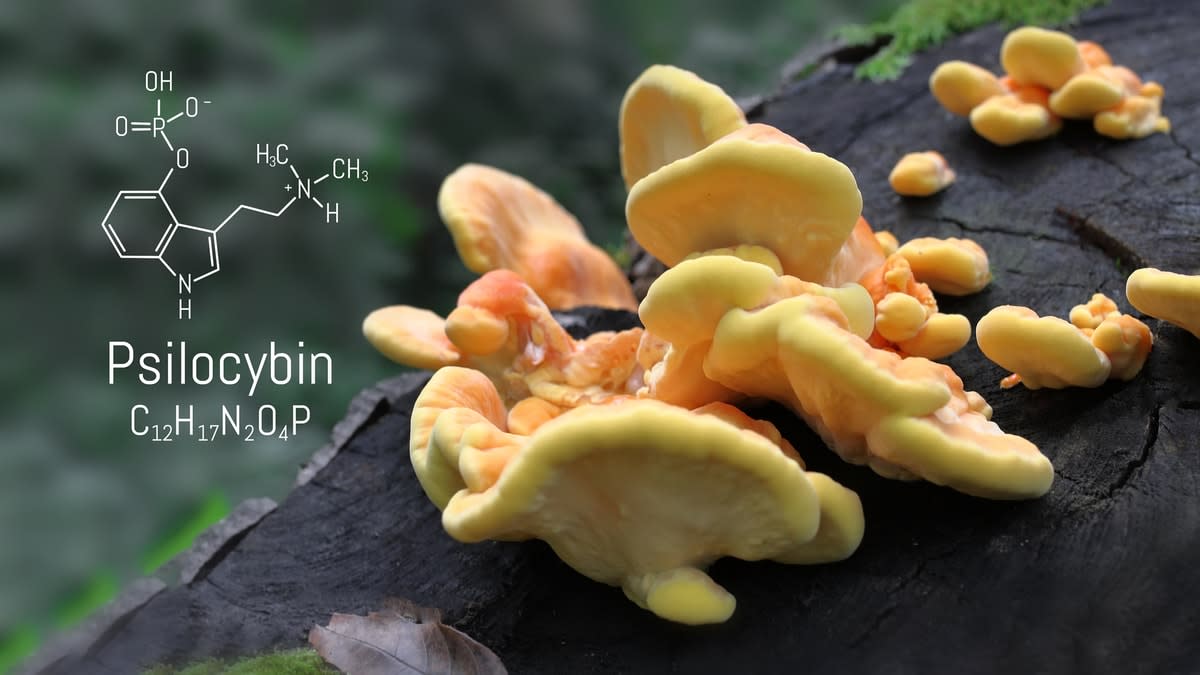Engineering to neuroscience: Meditation, psychedelics, and unlocking the mysteries of the brain
Associate Professor Adeel Razi – now front-and-centre in Monash University’s bold new psychedelic-assisted therapy initiatives – is a neuroscientist, specialising in brain imaging and brain “communication”.
It wasn’t always like this. He started out as an electrical engineer researching wireless technology during his PhD.
Associate Professor Razi is from Karachi in Pakistan. He went to school and university (initially) in his home city after excelling in engineering-related subjects at school and being selected for a pre-university college.
“If I look back, I'm very, very lucky,” he says, “because resources were limited. Although I didn't realise that at the time, you are there, and everyone else around you is like you.
“I actually didn't know what was happening to me. I was just doing my high school, and that's where everything changed. Somehow, from the school, I was able to get into one of the best state colleges for pre-engineering studies. And it was highly competitive – Karachi is a city of about 25 million people, and 50 kids got in on merit.
“I thought one of the biggest questions is to understand how the brain works, so why not give it a crack?”
On Associate Professor Razi’s father’s side of the family is a line of gold and silversmiths.
“It’s not that they were rich,” he says. "It’s the profession they were in. My grandfather was a silversmith, making very nice spoons and forks, and actually had a suffix appended to his name [in Urdu] that translates to ‘silversmith’.
“I was the first one around my family, around the neighbourhood, that was able to get into that college,” he says. “I did well there and then went on to do my engineering degree. There, I was awarded a university medal and hired by the same university to teach, and then given a scholarship for doing a master’s degree.
“I went to RWTH Aachen in Germany and did my master's there, and then was lucky again to get an international scholarship to complete my PhD studies at the University of New South Wales in Sydney, finishing it in 2012.”
On some time off for travel towards the end of his PhD studies, he visited a relative in the United States, and while there decided to go to a Society for Neuroscience conference nearby.
“I really wanted to do something where I could use my background in engineering to contribute towards research in biomedical sciences. I thought one of the biggest questions is to understand how the brain works, so why not give it a crack?”

Associate Professor Razi then made a career U-turn to take a deep dive into neurosciences. He wrote to the most eminent neuroscientist in the world, Professor Karl Friston, from University College London.
“He is really a remarkable person and scientist. I sent a cold email to him saying, ‘Hey, I want to work with you’. He very surprisingly responded that they had a job opening. I really don't know why he hired me at the time, but he hired me. I had then a journey of my lifetime working alongside him for the next six years.”
Now, Associate Professor Razi is the deputy program leader in the Brain Mapping and Modelling for Monash’s Turner Institute for Brain and Mental Health, having made the leap from figuring out how wireless devices communicate, to figuring out how different parts of the brain communicate with each other and the body.
He’s among the emerging scientific excitement in psychedelic research as scientists work with previously untapped compounds.
The therapeutic possibilities of, among others, psilocybin (the psychoactive substance in “magic mushrooms”) and MDMA (the active substance in some street “ecstasy”) has remained largely unknown, due to prohibition and tight medical regulations since the 1970s.

Associate Professor Razi’s current project in the Monash psychedelics research suite is an early step in the University’s goal of finding mental health therapies for the future, using the understanding that one in eight Australians use antidepressants despite the best only leading to remission for one-third with depression and one-quarter with PTSD (post-traumatic stress disorder).
More and more international studies are showing extraordinary results with psychedelic compounds and their usefulness during therapy for a range of common mental illnesses, as well their potential to help understand the human consciousness.
Mental health rates continue to climb, and experts across Monash’s multi-faculty psychedelics projects say the early promise of psychiatry as a brain-based solution to mental distress hasn’t been fulfilled.
Read more: Psychedelic research renaissance: The urgent quest for new mental health medicines
Powdered psilocybin arrived at Monash University in Melbourne in early February through its collaboration with the Usona Institute in the US. It will be used in Associate Professor Razi’s first trial – the first of its kind at an Australian university – which started on 7 March, in research on healthy people (that is, with no mental illness) with psilocybin and meditation.
“We know meditation helps with managing anxiety and results in better mental health outcomes,” he says. “We will look at the brain images to infer and compare brain connectivity on psilocybin between meditating and non-meditating participants.
“This line of work started with the PhD project of Devon Stoliker, an international PhD student from Canada in my lab, who is very enthusiastic about both meditation and psychedelics.
“There’s a decent amount of existing literature which talks about the parallels between meditation and psychedelics – that long-term meditation can achieve the similar effects as those of psychedelics.
“Meditation has been an integral part of psychedelic science and culture and society. But what does it mean in a clinical trial in PTSD or depression or anxiety? What does it mean in terms of brain function changes? As part of the preparation for psychedelic-assisted therapy, can we actually include meditation in the treatment pipeline?”
So how does the trial work? Sixty participants are divided into two groups of 30. One group meditates and the other does not, with both groups going through MRI and EEG brain scans, enhanced with music, visuals and “mind-wandering”. Brain imaging is repeated twice, with and without psilocybin.
“MRI and EEG are complementary brain measurements,” he says.” This is called multimodal imaging – multiple ways to image the same brain function. In my lab, we’re developing computational models to fuse them to give a more powerful multi-scale, multimodal picture of how the human brain is organised.
“There will be 120 imaging sessions, each lasting around three hours, which is 360 hours of real-time brain imaging – a huge, huge amount, complemented with a battery of behavioural measurements to get a comprehensive quantification of psychedelic experience.”
The meditators also do eight weeks of guided meditation training prior to the dosing/imaging session.
The dosing sessions are all at the Turner Institute’s Brain Park facility, seemingly purpose-built for such investigations. The brain imaging is conducted at the Monash Biomedical Imaging.
The participants are dosed orally via capsules – enough for six to eight hours of an altered consciousness experience. They reach a “peak” after about an hour and are then imaged in a three-hour window after that.
“The brain is a ‘computational’ device,” Associate Professor Razi says. “In my work before starting in computational neuroscience, I was looking at intelligent wireless devices and systems, and how the information is processed and transferred between and within them.
“Of course, brains are very different from man-made systems in many ways and are much more energy-efficient because the brains, as we possess them now, have evolved over billions of years, hence have evolutionary advantages that man-made AI systems don’t.
“They’re fundamentally different in how they work, but once you look at interpreting the brain imaging measurements, in terms of the mathematics that I used before and what I do now… they are very, very similar.

A window into the brain
“How does this connect with psychedelics? I see them as a way to alter conscious experience, and consciousness can be defined computationally – as the process of inference. A process of being sentient – that is, making sense of things around you.
“Once I can change consciousness, using psychedelics, I can record these changes using sophisticated brain imaging techniques in real-time, which in turn gives me a window to get a sneak peek of the brain’s workings.
“So psychedelics to me, besides their huge potential to treat mental disorders, are also an exciting way to decipher the mysteries of brain, mind and consciousness.”
Based on a dominant but working theory in current literature, he also provides a potential explanation of how psychedelics work in the brain to treat various mental health problems – “in someone with an internalising disorder like depression, for example, they have just a very narrow view of their circumstances, of how things are. They can't entertain other potential possibilities or hypotheses of various events happening around them other than their current beliefs.
“What the psychedelics are doing in the brain is to ‘relax’ those beliefs about how the world around them is functioning, which makes it possible for people to entertain alternate hypotheses and to see things differently than they did before.”






